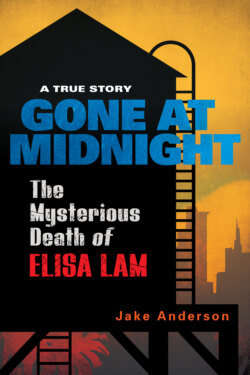Читать книгу Gone at Midnight - Jake Anderson - Страница 6
На сайте Литреса книга снята с продажи.
ОглавлениеAUTHOR’S NOTE
I wrote this book after several years of research into the Elisa Lam case. On a journalistic level, I faced significant hurdles, namely that after the investigation was officially closed, the three ostensible sources for information on the case—the LAPD, the Cecil Hotel, and the family—remained completely silent.
I had one critical asset, though, a primary source that changed the trajectory of my investigation: the departed left behind a wealth of online posts. Initially, I viewed these as potential sources for clues to what happened in Elisa’s final days. To my surprise, what I discovered after reading and studying hundreds of pages of her writing is that Elisa and I had a great deal in common. The full extent of this affinity didn’t become apparent until about midway through the project, and it truly shocked me.
Though I have been unable to interview her family (no one has), Elisa’s public-facing, first-person monologues, in addition to stories and analysis provided to me by her friends, allowed me to reconstruct aspects of her life. While I did, in a couple sections, take creative license to reconstruct scenes, characterizations, and pastiches, the majority of material featuring Elisa is based strictly on her own autobiographical descriptions.
It took time (years, in fact), but I slowly began to discover new evidence in the criminal investigation. Since the vast majority of LAPD personnel and Cecil Hotel employees refuse to discuss the case, I had to cast a wide and unconventional fact-finding net. In addition to Elisa’s writing and the police and court records, my sources eventually included a police informant, an investigative journalist, a private investigator, a retired deputy coroner, a forensics expert, an LAPD psychologist, several hotel tenants, a bouncer, a family member of a Cecil Hotel employee, and many others. The information they disclosed to me casts considerable shade on the official explanation of Elisa’s death.
Normally, the lack of involvement by the family—who, tragically, I imagine was doubly traumatized from the sensational media coverage after Elisa’s death—would have prevented me from pursuing a commercial project on the subject. However, I strongly believe that since there are already tens of thousands of blog posts and videos (many of them monetized) depicting Elisa in an antagonistic, stigmatizing, and often inaccurate light, there is room for one more entry that takes a hard dive into previously unknown facts of the case and, just as important, provides a larger context for the reality of her psychological struggles. In this sense, the book is a cross-pollination of true-crime and psychological memoir as well as a call for justice that requires equal parts criminal and sociological reckoning.
I believe Elisa’s story can help others by humanizing and de-stigmatizing mental illness so that more people speak openly about their problems with friends and family and seek help. The case—and Elisa herself—became part of the zeitgeist, veritable obsessions for some (at one point garnering 70,000 organic Google searches a month on top of the feverishly viral social media activity). My analysis of this response suggests a sociological component to the case that involves analysis of pathology, conspiracy theories, identity, and the desire for meaning in the Internet age.
Elisa’s story also has ramifications for criminal justice and the burgeoning websleuth movement.
My methodology throughout this journey has been simple but painstaking. I only formed conclusions based on facts or the debunking of falsehoods; I avoided confirmation bias in support of my hypotheses and continually revised these hypotheses after faithfully following the trail of facts and evidence; I let analysis of the facts lead the narrative and not the other way around; I aimed for transparency where possible (though several of my sources requested to remain anonymous out of fear of retribution); and I used primary materials as much as possible.
On a logistical note, the Cecil Hotel is referenced hundreds of times in the book. Though the hotel was renamed Stay On Main earlier this decade, I decided to stick with its original name to avoid confusion.
I plan to use a portion of the proceeds earned from this book for donations to the Lam family as well as to several cutting-edge mental health research and advocacy groups.
